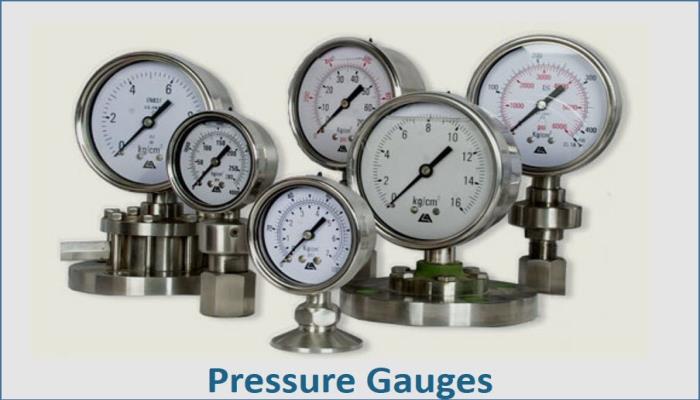How Do Pressure Gauges Work and Measure Pressure?

Pressure gauges are important tools used in many fields to measure and monitor the pressure in a system. These tools are crucial for keeping things safe and running smoothly in many fields, such as industry, engineering, and everyday life.
This article will detail how pressure gauges work and how they can measure pressure in different situations.
How to Measure Pressure: The Basics
It is important to understand the basics of measuring pressure before understanding how pressure gauges work. Pressure is the force that is acting on a certain area. It is usually measured in terms like bar, pascal, or pounds per square inch (psi). For example, pressure gauges show this force visually and tell you how much pressure is in a system.
What Makes Up a Pressure Gauge:
1. The Bourdon Tube
The Bourdon tube is an important part of many pressure gauges and is what the gauges use to measure pressure. The Bourdon tube is a hollow, curved tube that tries to straighten when pressure is put on it. It is usually made of metal. In many gauge designs, this mechanical compression is used to measure pressure.
2. The dial and pointer
The dial on the PCI pressure gauge has a scale that shows the range of pressure being recorded. The pointer, usually attached to the Bourdon tube, goes along this scale to show the current pressure. The scale is set up to work with the pressure units needed for the job.
3. Port for connecting
A connecting port on pressure gauges lets them connect to the system or equipment being watched. This port lets the system’s pressure work on the Bourdon tube, starting the mechanical response that lets you measure pressure.
4. Moving and Connecting
The movement and linkage system inside the pressure gauge turns the Bourdon tube’s mechanical distortion into the pointer moving across the dial. This makes sure that the pressure applied to the gauge is shown correctly and in the right way.
Bourdon Tube Pressure Gauges Work by Following these Steps:
1. Putting pressure on something
When pressure is put on the system linked to the gauge, the connection port sends that pressure to the Bourdon tube.
2. Changes in the Bourdon tube
Because the Bourdon tube is made of bendable metal, it changes shape when pressure is put on it. The free end of the tube moves because the tube tries to straighten out.
3. Moving Information
When the Bourdon tube moves, it also tells the movement and linkage device inside the gauge to move. This machine part turns the mechanical deformation into the pointer’s rotating movement.
4. Moving the pointer
The pointer on the dial moves along the measured scale to show the pressure level as the Bourdon tube bends. The pressure on the machine is directly related to the pointer’s location.
Different kinds of pressure gauges:
1. Gauges for Bourdon tubes
The most popular kind, these gauges, use the Bourdon tube principle to measure pressure. They can be used in many situations and at many pressure levels.
2. Gauges for the diaphragm
Instead of a Bourdon tube, diaphragm gauges measure pressure with a bendable diaphragm. These are often used in situations where a Bourdon tube might not work.
3. Gauges with Bellows
A curvy metal bellows is used instead of a Bourdon tube in bellows gauges. In vacuum and low-pressure situations, they can be used to measure pressure.
4. Manometers
These machines measure pressure by measuring the height of a liquid column in a tube. U-tube, well-type, and inclined-tube manometers are some of the most common kinds.
5. Digital gauges for pressure
Digital technology may be used to measure pressure in modern pressure gauges. These gauges give accurate readings and may have extra features like saving data and connecting to the internet.
Calibration and Accuracy
Pressure gauges need to be calibrated regularly to ensure they are accurate. Setting the gauge up to match a known standard is what calibration is. They must be calibrated regularly to keep pressure readings accurate, especially in fields where accuracy is very important.
Monitoring That You Can Trust for a Wide Range of Uses
Pressure gauges are very useful for monitoring and tracking pressure in many situations. These innovations give useful information about a system’s state, whether in an industrial setting, an HVAC system, or an everyday appliance.
Knowing how pressure gauges work, especially the Bourdon tube system, helps people understand their work and appreciate their accuracy at measuring pressure.
Pressure gauges continue to be very important for keeping processes safe and running smoothly in many different industries as long as they are properly maintained, calibrated, and used according to the manufacturer’s instructions.



